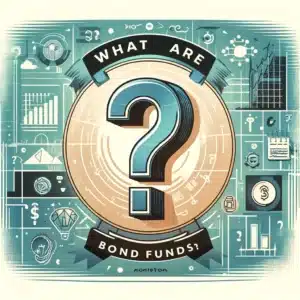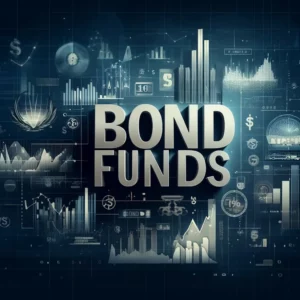This post will explore some good bond funds to invest in.
Bond funds investment might not bring as much growth as stocks, but it offers more stability. They usually move differently from growth-focused mutual funds containing stocks or real estate, which can balance out an investment mix.
Bond funds are handy for generating steady income and keeping a portfolio steady, especially during market uncertainties.
If you are looking to invest as an expat or high-net-worth individual, which is what I specialize in, you can email me (advice@adamfayed.com) or WhatsApp (+44-7393-450-837).
It’s crucial to have practical expectations about your bond investments.
Bond Funds Meaning

Bond funds provide individual investors with effective access to the asset class with increased diversification by pooling the capital of several individuals to invest in a diverse portfolio of bonds or debt instruments.
To lower risk and volatility, these funds make investments in a range of bonds with varying maturities, credit ratings, and industry sectors. They can be classified by their underlying assets, such as corporate, municipal, agency, or government bonds, and managed either actively or passively.
Good Bond Funds to Invest In
The list below does not include all options available in the market. Instead, it focuses on some of the best bond funds for 2024 or the bond funds to buy now from major providers.
Note that some data might have changed from the time of writing; regardless, it should give you information that you’re looking for.
Vanguard Bond Funds
Vanguard is renowned for its bond funds that span various sectors, as discussed below:
Vanguard Long-Term Investment-Grade Fund – VWESX
This bond fund targets premium corporate bonds that have a rating higher than B, so its investments have a better safety margin. This option has a 23-year average maturity.
It offers a dividend yield of roughly 3.2% and appeals to investors looking for stable income from better-quality debt instruments.
Vanguard Tax-Exempt Bond ETF – VTEB
VTEB invests in a portfolio of tax-exempt municipal bonds.
Despite its seeming modesty, the 1.4% return is tax-exempt, providing investors who must pay federal income taxes with a larger effective yield. VTEB’s medium-sized asset base guarantees sufficient diversity while preserving liquidity and efficiency, with an average credit grade of AA.
Fidelity Bond Funds

Fidelity Investments is another major player offering bond funds that typically range from high-yield options to municipal and government bond funds as seen below:
Fidelity Investment Grade Bond Fund – FBNDX
This investment focuses on fixed-income securities rated BBB or higher, allotting a significant portion in US Treasury securities. It tries to balance government and corporate debt. The fund is known for its consistent performance and a moderate expense ratio of 0.45%.
Fidelity Short Duration High Income Fund – FSAHX
This opportunity is for investors who want to lower their interest rate risk. It has a short average duration of 2.2 years and offers a good SEC yield. Its expense ratio hit 0.75%.
Fidelity Intermediate Treasury Bond Index Fund – FUAMX
This offering has a safer bet with minimal credit risk. It almost exclusively eyes US Treasury securities. The relatively higher duration signifies a moderate interest rate risk, balanced by a 4% yield, as well as a very low expense ratio of 0.03%.
Fidelity Municipal Bond Index Fund – FMBIX
This is apt for those in higher tax brackets amid its tax-exempt interest income and high-quality municipal bonds offering. It offers a balanced choice for those concerned about taxes and want steady returns, thanks to its low expense ratio of 0.07%.
Fidelity Conservative Income Bond Fund – FCNVX
This bond fund focuses on short-term corporate bonds, particularly in the banking industry, with good credit ratings and an appealing 5.3% 30-day SEC yield. Its ultrashort duration provides security against interest rate changes.
Schwab Bond Funds

Like Vanguard and Fidelity, Schwab provides options across the risk-return spectrum, including corporate, government, and municipal bond funds. Each fund is managed with a focus on achieving competitive returns while managing risk.
Schwab U.S. Aggregate Bond Index Fund – SWAGX
SWAGX aims to closely match the performance of the US investment-grade bond market, minus fees and expenses. Its performance has been mixed across different time frames, with a 1-year return of +5.44%, showing its ability to adapt to market changes and its potential as a core bond investment for diversification.
SWAGX’s performance compared to its benchmarks indicates it competes well in the intermediate core bond category, closely matching the returns of the Bloomberg US Aggregate Bond Index over various periods.
Despite challenges in the bond market in recent years, the fund has delivered positive returns over 1 year, though it has seen declines over 3 and 5 years.
Pros and Cons of Investing in Bond Funds
Bond fund benefits
- A wide variety of bonds are offered by bond funds, mitigating risk and volatility.
- In order to meet investment objectives, knowledgeable managers evaluate and select bonds.
- Easily traded on stock exchanges, with flexible purchasing and selling options.
- Accessible to individual investors with minimal initial investment requirements.
Bond funds risk
- Fees have the potential to reduce total investment returns.
- Less control is available to investors than when choosing individual bonds.
- Bond values could decrease if interest rates rise.
- Susceptible to credit risk in the event that bond issuers miss payments.
Pained by financial indecision?

Adam is an internationally recognised author on financial matters with over 830million answer views on Quora, a widely sold book on Amazon, and a contributor on Forbes.



